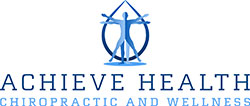Osteoporosis
Researchers estimate that about 1 out of 5 American women over the age of 50 have osteoporosis. About half of all women over the age of 50 will have a fracture of the hip, wrist, or vertebra (bones of the spine).
Osteoporosis is the most common type of bone disease. Osteoporosis occurs when the body fails to form enough new bone, when too much old bone is reabsorbed by the body, or both.
Calcium and phosphate are two minerals that are essential for normal bone formation. Throughout youth, your body uses these minerals to produce bones. If you do not get enough calcium, or if your body does not absorb enough calcium from the diet, bone production and bone tissues may suffer.
As you age, calcium and phosphate may be reabsorbed back into the body from the bones, which makes the bone tissue weaker. This can result in brittle, fragile bones that are more prone to fractures, even without injury.
Usually, the loss occurs gradually over years. Many times, a person will have a fracture before becoming aware that the disease is present. By the time a fracture occurs, the disease is in its advanced stages and damage is severe.
You can’t feel your bones becoming weaker. You could have osteoporosis now or be at risk for it without realizing it. Often, breaking a bone is the first clue that you have osteoporosis. Or, maybe you notice that you are getting shorter or your upper back is curving forward. At this point the disease may be advanced. Fortunately, a bone mineral density test can tell if you have osteoporosis before you have these symptoms. This makes it possible to treat the disease early to prevent broken bones.
What Are The Symptoms of Osteoporosis?
Osteoporosis is a “silent disease” because typically you do not have symptoms until the later stages. As the disease progresses, you may develop symptoms related to weakened bones, including:
- Back pain
- Loss of height and stooped posture
- A curved backbone (dowager’s hump)
- Fractures that may occur with a minor injury, especially of the hip, spine, or wrist
- Neck pain due to fractures of the spinal bones
How Is Osteoporosis Treated?
The process of bone thinning is a natural part of aging. However, you can slow or delay osteoporosis with healthy lifestyle habits, such as not smoking, getting enough calcium and vitamin D, and getting regular exercise, which helps build and strengthen your bones.
Who Is At Risk?
Small-statured women are the most susceptible. We recommend women get screened by the age of 40 especially with the following risk factors:
- Smokers
- Diet low in calcium
- Inactive
- Family history of Osteoporosis
- Corticosteroid use
- Thyroid disease
Healthy Living
You’re never too young or too old to improve the health of your bones. Osteoporosis prevention should begin in childhood. But it shouldn’t stop there. Whatever your age, the habits you adopt now can affect your bone health for the rest of your life. Now is the time to take action.
People suffering from this silent disease can benefit greatly through Chiropractic Care of Osteoporosis.


